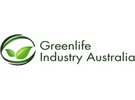The Australian Pesticides & Veterinary Medicines Authority (APVMA) announced via Gazette on the 19th of November 2019 that they will be reviewing registered neonicotinoid insecticides currently available in Australia. The scope of the review will cover the areas of toxicology/OHS, environment and adequacy of label instructions expected to begin in 2020 and conclude with the final regulatory decision mid-2023.
Active ingredients that fall under the neonicotinoid family of insecticides include the following along with the relevance to nursery production (nursery stock):
- Acetamiprid – CORMORAM INSECTICIDE (PER86931)
- Clothianidin – SHIELD or SAMURAI SYSTEMIC INSECTICIDE (Fruit trees)
- Dinotefuran – STARKLE 200 INSECTICIDE (PER84742)
- Imidacloprid – CONFIDOR 200 SC INSECTICIDE & SUSCON MAXI SOIL INSECTICIDE (PER81707)
- Thiacloprid – CALYPSO 480 SC INSECTICIDE (Pome and Stone Fruit)
- Thiamethoxam – DURIVO INSECTICIDE (PER81707)
APVMA will reconsider matters focused on the potential for unacceptable environmental risk in various areas including:
- non-target invertebrates, including pollinators;
- birds; and
- small animals.
The following environmental aspects will be reviewed in light of managing the risks including:
- aquatic degradation;
- persistence in environmental media (soil, water and sediment);
- translocation in plants;
- the partitioning in the environment (eg, deposition, adsorption); and
- toxicity to fish, non-target invertebrates, and sediment organisms.
The APVMA will further consider whether product labels are adequately conveying the appropriate/adequate instructions and warnings including:
- the circumstances in which the product should be used;
- how the product should be used;
- the times when the product should be used;
- the frequency of the use of the product;
- the re-entry period after the use of the product;
- the withholding period after the use of the product;
- the disposal of the product and its container;
- the safe handling of the product and first aid in the event of an accident caused by handling the product; and
- any other matter prescribed by the regulations.
Developed by the GIA National Nursery Industry Biosecurity Program Team 2019
For more information: Greenlife Industry Australia
Greenlife Industry Australia
John McDonald
john.mcdonald@greenlifeindustry.com.au
www.greenlifeindustry.com.au
